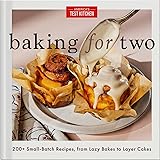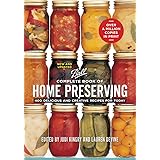In a world increasingly turning towards conscious eating, statistics reveal a significant shift: over 79 million Americans now report actively incorporating plant-based options into their diets, with a growing segment focusing on alkaline dietary principles for optimal well-being. This dietary shift isn’t just about exclusion; it’s about embracing vibrant, nutrient-dense ingredients that nourish the body at a cellular level. As you just witnessed in the accompanying video, crafting a truly satisfying and compliant alkaline vegan meal, such as a rich lasagna, is not only achievable but remarkably straightforward when leveraging the right ingredients and techniques.
The Art of Alkaline Vegan Lasagna: Beyond the Bake
The culinary journey presented in the video showcases the foundational steps for an exquisite alkaline vegan lasagna. However, the true mastery lies in understanding the synergy of each component, from the robust “meat” substitute to the creamy “cheese” and the vibrant sauce. This isn’t merely a recipe; it’s a testament to the power of whole, unprocessed foods in creating gourmet experiences that align with Dr. Sebi’s nutritional philosophy.
Crafting the Ultimate Walnut Meat: Texture, Flavor, and Bioavailability
The video brilliantly highlights the initial step: transforming one cup of walnuts into a versatile, textured “meat” substitute. Achieving that perfect consistency, reminiscent of ground meat without over-processing into a paste, is paramount. This semi-crumbly texture provides the necessary mouthfeel for a hearty lasagna. But why walnuts? Beyond their rich, earthy flavor, walnuts are a powerhouse of omega-3 fatty acids, crucial for anti-inflammatory processes and cognitive health. Their alkaline ash residue further reinforces their suitability for this diet.
To truly elevate this walnut base, consider a nuanced approach to seasoning. While salt, oregano, cayenne, onion powder (or granules for a less processed option), and thyme provide an excellent aromatic foundation, imagine incorporating additional layers. A pinch of ground sage could impart a deeper, more savory dimension, while a touch of dried dill might introduce an unexpected brightness. The goal is to build a complex umami profile that satisfies without relying on traditional acidic ingredients. For instance, some expert alkaline chefs might even incorporate finely chopped mushrooms (like oyster or shiitake, if aligned with personal dietary choices) into the food processor alongside the walnuts to amplify the umami and add another layer of texture, ensuring maximum flavor extraction.
The Foundational Sauce: A Symphony of Alkaline Flavors
The instruction to add “sauce to your baking dish” is deceptively simple. In alkaline vegan cuisine, the sauce is the soul of the lasagna, demanding careful consideration to maintain alkalinity while delivering rich flavor. Traditional tomato-based sauces, often high in acidity, are typically avoided. Conversely, a robust, vibrant alkaline marinara can be created using ingredients like roasted red bell peppers, sun-dried tomatoes (dried without sulfites, and soaked to rehydrate), red onion, dates for a hint of sweetness, and a blend of fresh or dried alkaline-approved herbs like basil, oregano, and marjoram. Blending these ingredients with filtered water until smooth creates a sauce that is both deeply flavorful and nutritionally compliant.
For an even richer depth, some culinarians might lightly sauté the red bell peppers and onions before blending, caramelizing their natural sugars to enhance sweetness and complexity. This technique, though briefly mentioned in the video for the walnut meat, applies equally well to building a profound flavor base for your sauce. The key is to achieve a balance—a sauce that is neither too thin (leading to a watery lasagna) nor too thick (hindering even distribution).
Layering Perfection: Chickpea Noodles and Brazil Nut Brilliance
The choice of chickpea lasagna noodles is a strategic one, offering a gluten-free, protein-rich alternative to traditional wheat pasta. These noodles maintain their structure beautifully during baking, providing that satisfying chew without compromising dietary principles. However, for those seeking even lighter options, imagine an entirely raw version utilizing thinly sliced zucchini or even plantain strips as the “noodles,” adding a fresh, vibrant dimension and enhancing the dish’s overall enzymatic activity.
The “Brazil nut cheese” mentioned is a hallmark of sophisticated alkaline vegan cooking. This isn’t merely a topping; it’s a creamy, tangy, and nutrient-dense component that mimics the richness of dairy cheese. Typically crafted from soaked Brazil nuts, nutritional yeast (for a cheesy flavor profile), lemon juice, sea salt, and a touch of filtered water, it provides not only essential fats and selenium but also a delightful textural contrast. The consistency is key—a thick, spreadable cream that melts slightly during baking, creating a luscious, integrated layer. Expert chefs might even add a hint of cayenne or a finely minced garlic clove (if permitted by their interpretation of the diet) to give the Brazil nut cheese an extra kick, demonstrating a deeper understanding of flavor dynamics.
The Finishing Touch: Flax Flakes Breadcrumbs and Strategic Baking
The video concludes with the ingenious use of flax flakes for breadcrumbs, followed by baking for 25 minutes. This small detail is highly significant. Flax flakes, when lightly processed, create a wonderfully crunchy topping that provides beneficial omega-3s and fiber, completely bypassing conventional breadcrumbs which are often wheat-based and non-alkaline. This demonstrates a deep commitment to sourcing and utilizing ingredients that serve multiple nutritional and textural purposes.
Baking for precisely 25 minutes is often a starting point, and variables like oven calibration and the moisture content of your sauce can influence the optimal time. Expert bakers might suggest covering the lasagna for the initial 15-20 minutes to ensure even cooking and prevent the top from browning too quickly, then uncovering it for the final 5-10 minutes to achieve that coveted golden-brown crispness on the flax flake topping. Furthermore, allowing the lasagna to rest for 10-15 minutes after removing it from the oven is a critical, often overlooked step. This allows the layers to set and firm up, making for cleaner cuts and preventing the “collapse” often associated with freshly baked casseroles.
Ultimately, this alkaline vegan lasagna, built upon the detailed demonstration in the video, transcends a simple meal. It is a gourmet experience, rich in flavor, texture, and micronutrients, exemplifying how compliant ingredients can be transformed into culinary masterpieces that promote holistic well-being. From the robust walnut meat to the creamy Brazil nut cheese, every element works in harmony, offering a deeply satisfying and nourishing dish aligned with alkaline principles.











